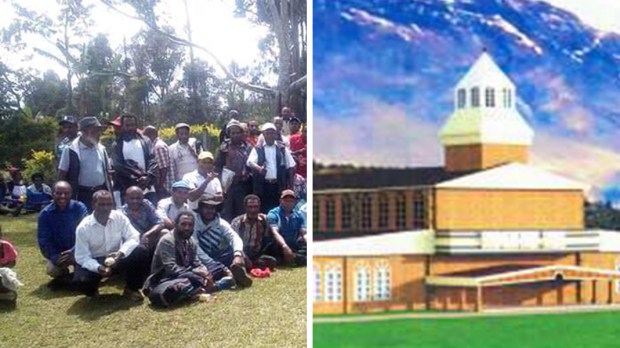Building a church of cathedral proportions is always a serious undertaking. But this is particularly the case when the building site is in a village in a mountainous section of the South Pacific nation of Papua New Guinea, one of the world’s more remote settings.
Inhabited by humans about 40,000 years ago, Papua New Guinea (also known by the acronym “PNG”) has been an independent nation for just 45 years. It was formerly a colony of the United Kingdom, which in 1905 transferred control to Australia. Germany controlled the northern part of the territory for three decades prior to World War I.
PNG remains very much a rural place, as only 13% of the population lives in urban areas. Many people inhabit some of the more inaccessible settings on the planet, unconnected by any roads. Indeed, there still are a significant number of “uncontacted peoples,” who have had no interaction with the world outside of their small clan.
Along with geographical remoteness, this nation is highly diverse: there are more than 1,000 different ethnic groups. And, with over 800 languages, PNG has more linguistic diversity than any other nation on the planet.
One item of commonality among most people is Christianity: PNG, which shares its only international border with Indonesia (the world’s most populous Muslim country), is overwhelmingly Christian (96%). Many churchgoing Papua New Guineans mix their Christianity with traditional animistic beliefs.
The nation’s population is approaching 9 million, and about 25 percent of them are Catholic. There are 4 archdioceses and 19 dioceses.
Catholicism first came to the outskirts of PNG, courtesy of French missionaries, in 1847. It took more than a century for the Church to make inroads into the Western Highlands, where about 30% of the people are now Catholic.
Here in this region, a group of Catholics – most of them subsistence farmers – who belong to the Sinsibai Parish have decided that their corrugated iron church is insufficient. So they set about constructing a priest’s house and pastoral center. And now they seek to build an actual cathedral.
The first Sinsibai church arose in the 1960s, built on land donated by a local chief. A second church building was built in 1982. Though this structure has served its purpose for almost four decades, it is now “overcrowded and old,” says Allan Sumb, the Fundraising Chairman for the Sinsibai Church Project. He also serves on faculty at Divine Word University in Madang, PNG.
The current Sinsibai church received its designation as a parish in 2014. For a long time beforehand, it existed as an outstation of a neighboring parish. Sumb says that the idea of new, much larger, church first surfaced in 2010.
The Sinsibai church, along with its several outstations, has an estimated 10,000 parishioners – a particularly large number for a rural area. Mass is delivered in Tok Pisin, a creole that serves as the nation’s most prominent language (a minority of Papua New Guineans speak English, which also serves as an official language along with Tok Pisin).
Sumb relates how Sinsibai parishioners walk to church every Sunday, even though some of them live as far as 10 kilometers (more than six miles) away. He adds that this parish “has flourished under the leadership of strong senior church and community leaders.”
Such leadership will be necessary for success in the parish’s new lofty endeavor. Its details have recently become more clear: Sumb says that architectural drawings, along with a list of the necessary materials and a cost estimate, were rendered by a private contractor in Mount Hagen, which is the capital of Western Highlands Province.
The project will require about 2 million PNG Kina (a bit less than $600,000 USD). Fundraising launched on December 20, 2019, with a special event attended by Mount Hagen Archbishop Douglas Young, who acknowledged that the Sinsibai Church Project is a challenging one indeed, but not impossible.
The Sinsibai parishioners hope to complete the project at some point in the year 2022. One can check on their progress by way of the Sinsibai Church Project Facebook page.

